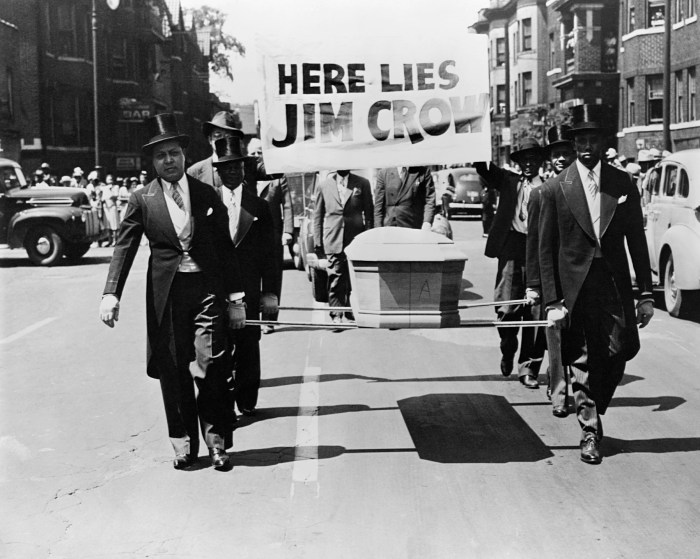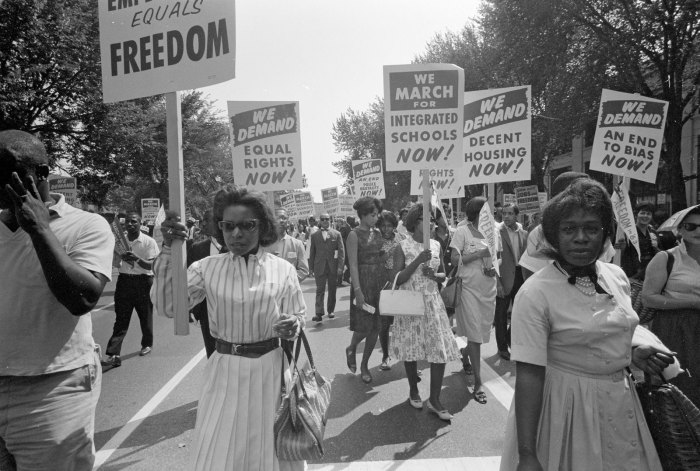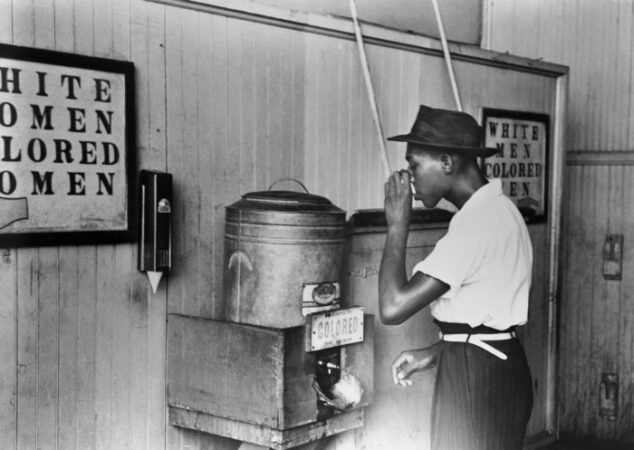
When did Jim Crow laws end? This question delves into a pivotal chapter in American history, a period marked by segregation and discrimination against African Americans. While the Jim Crow era officially ended in the mid-20th century, its legacy continues to shape the United States today. This journey explores the roots of Jim Crow, its gradual dismantling, and the ongoing struggle for racial justice.
From the end of Reconstruction to the Civil Rights Movement, Jim Crow laws systematically enforced racial separation and inequality. These laws, rooted in prejudice and the desire to maintain white supremacy, impacted every aspect of Black life, from voting rights to access to education, healthcare, and housing. The fight to dismantle these laws was long and arduous, involving countless individuals who risked their lives to challenge the status quo.
The Gradual Erosion of Jim Crow Laws

The Jim Crow era, a period of systematic racial segregation and disenfranchisement in the American South, lasted for nearly a century after the Civil War. While the end of Reconstruction in 1877 marked a turning point, the dismantling of Jim Crow laws was a gradual process, fueled by legal challenges, the Civil Rights Movement, and landmark legislation.
Legal Challenges and Court Cases
The fight against Jim Crow segregation began with legal challenges in the early 20th century. These early cases, while often unsuccessful, laid the groundwork for future legal battles.
- Plessy v. Ferguson (1896): This landmark Supreme Court case upheld the constitutionality of “separate but equal” facilities for blacks and whites. This decision, although ultimately overturned, provided legal justification for Jim Crow laws for decades.
- Brown v. Board of Education (1954): This landmark case overturned Plessy v. Ferguson, declaring that state-sponsored segregation in public schools was unconstitutional. This decision marked a turning point in the fight against Jim Crow and sparked the Civil Rights Movement.
- Loving v. Virginia (1967): This case struck down state laws prohibiting interracial marriage, further dismantling the legal framework of Jim Crow.
The Civil Rights Movement
The Civil Rights Movement, which gained momentum in the 1950s and 1960s, played a crucial role in dismantling Jim Crow. This movement, characterized by nonviolent protests, boycotts, and legal challenges, brought the injustices of Jim Crow to the forefront of national attention.
- The Montgomery Bus Boycott (1955-1956): This boycott, sparked by Rosa Parks’ refusal to give up her seat on a bus to a white man, lasted for over a year and led to the desegregation of public transportation in Montgomery, Alabama. This boycott served as a model for future protests and brought national attention to the fight for civil rights.
- The March on Washington for Jobs and Freedom (1963): This historic march, which drew over 250,000 people to Washington, D.C., was a pivotal moment in the Civil Rights Movement. The march, which included Martin Luther King Jr.’s iconic “I Have a Dream” speech, demanded equal rights for all Americans and put immense pressure on the federal government to act.
- The Freedom Riders (1961): A group of activists, both black and white, rode buses through the South to challenge segregation on interstate transportation. They faced violence and arrests, but their courage brought national attention to the issue of segregation and contributed to the passage of the Civil Rights Act of 1964.
Landmark Legislation
The Civil Rights Act of 1964 and the Voting Rights Act of 1965 were two landmark pieces of legislation that effectively dismantled Jim Crow segregation.
- The Civil Rights Act of 1964: This act outlawed discrimination based on race, color, religion, sex, or national origin. It prohibited discrimination in public accommodations, employment, and education, effectively ending segregation in many areas of American life.
- The Voting Rights Act of 1965: This act outlawed discriminatory voting practices, such as literacy tests and poll taxes, which had been used to disenfranchise black voters in the South. It also authorized federal oversight of elections in areas with a history of voter discrimination, ensuring that African Americans could exercise their right to vote.
The Legacy of Jim Crow Laws
The Jim Crow era, though officially ended in the mid-20th century, left a lasting impact on American society, creating systemic disparities that continue to affect generations. While the legal framework of segregation was dismantled, the deep-rooted social and economic inequalities it fostered remain ingrained in many aspects of American life.
Racial Disparities in Education, Healthcare, and Economic Opportunity
The legacy of Jim Crow laws is evident in the persistent racial disparities across various domains, including education, healthcare, and economic opportunity. The systematic disenfranchisement and discrimination during the Jim Crow era created a foundation of inequality that continues to shape the experiences of African Americans today.
- Education: Despite significant progress, racial disparities in educational attainment persist. African American students are more likely to attend underfunded schools, experience lower graduation rates, and face higher rates of school suspensions and expulsions. This can be attributed to historical segregation, unequal access to resources, and implicit biases within the education system.
- Healthcare: Racial disparities in healthcare access and outcomes are also a stark reality. African Americans experience higher rates of chronic diseases, such as diabetes and heart disease, and have lower life expectancies compared to their white counterparts. This disparity can be attributed to factors such as socioeconomic status, access to quality healthcare, and implicit bias in medical treatment.
- Economic Opportunity: African Americans continue to face significant economic disparities. They have lower median incomes, higher unemployment rates, and are more likely to live in poverty compared to white Americans. This disparity is rooted in historical and ongoing discrimination in housing, employment, and access to capital, creating a cycle of poverty that is difficult to break.
Comparing the Legal and Social Landscape Before and After Jim Crow
The legal and social landscape underwent a dramatic transformation after the dismantling of Jim Crow laws. However, the transition was not a clean break, and the remnants of the Jim Crow era continue to shape the social fabric of the nation.
- Legal Landscape: Before Jim Crow, African Americans were granted citizenship and basic civil rights, but these rights were systematically eroded by Jim Crow laws. After the Civil Rights Movement, landmark legislation like the Civil Rights Act of 1964 and the Voting Rights Act of 1965 outlawed segregation and discrimination based on race. This marked a significant shift in the legal landscape, but it did not erase the deeply embedded societal inequalities.
- Social Landscape: The social landscape, however, remained deeply segregated and prejudiced, even after the legal dismantling of Jim Crow. The legacy of Jim Crow fostered a culture of racial bias and discrimination that continued to permeate various aspects of life, from housing and employment to education and healthcare. While the legal framework changed, the social fabric remained deeply affected by the enduring effects of segregation.
Key Areas of Jim Crow Impact and Racial Disparities, When did jim crow laws end
The following table highlights key areas where Jim Crow laws had a significant impact, illustrating the persistent racial disparities that continue to affect American society:
| Area | Jim Crow Impact | Racial Disparity |
|---|---|---|
| Education | Segregated schools, unequal funding, and limited access to quality education | African American students have lower graduation rates, higher suspension rates, and attend underfunded schools compared to white students. |
| Healthcare | Limited access to healthcare, discriminatory practices, and implicit bias in medical treatment | African Americans have higher rates of chronic diseases, lower life expectancies, and experience disparities in healthcare access and outcomes compared to white Americans. |
| Economic Opportunity | Discrimination in employment, housing, and access to capital, leading to economic disadvantage | African Americans have lower median incomes, higher unemployment rates, and are more likely to live in poverty compared to white Americans. |
| Criminal Justice | Discriminatory laws and practices, leading to mass incarceration and racial bias in the justice system | African Americans are disproportionately represented in the criminal justice system, facing higher rates of arrest, conviction, and incarceration. |
Ongoing Struggles for Racial Justice: When Did Jim Crow Laws End

While the legal framework of Jim Crow has been dismantled, its legacy continues to shape the experiences of Black Americans and other minority groups in the United States. Systemic racism, rooted in historical injustices, persists in various forms, manifesting in ongoing struggles for racial justice.
Contemporary Issues and Systemic Racism
The fight for racial justice continues to address contemporary issues that stem from the enduring impact of Jim Crow. These issues include:
- Mass Incarceration: The disproportionate incarceration of Black Americans, often attributed to discriminatory policing practices and sentencing disparities, highlights the enduring legacy of Jim Crow’s criminal justice system. The War on Drugs, for example, has disproportionately targeted Black communities, contributing to the overrepresentation of Black individuals in prisons.
- Wealth Gap: The racial wealth gap, a significant disparity in wealth accumulation between white and Black Americans, is rooted in historical inequities, including discriminatory housing policies and practices that limited Black Americans’ access to homeownership and wealth generation.
- Discrimination in Education: Despite the desegregation of schools, educational disparities persist. Black students often face underfunded schools, limited access to quality resources, and higher rates of disciplinary actions, perpetuating a cycle of educational disadvantage.
- Health Disparities: Black Americans experience poorer health outcomes compared to their white counterparts, attributed to factors such as environmental racism, lack of access to quality healthcare, and implicit bias in medical practices.
Outcome Summary

The end of Jim Crow laws marked a significant step forward in the fight for racial equality, but the struggle continues. While legal segregation has been dismantled, the legacy of Jim Crow remains deeply embedded in American society, manifested in persistent racial disparities in various areas. Understanding this history is crucial for recognizing the challenges that still exist and working towards a truly just and equitable society.
FAQ Guide
What were some specific examples of Jim Crow laws?
Jim Crow laws encompassed a wide range of discriminatory practices, including:
– Poll taxes: These required voters to pay a fee, effectively disenfranchising many African Americans.
– Literacy tests: These were often administered unfairly, preventing many Black voters from registering.
– Grandfather clauses: These exempted people whose ancestors had voted before 1867 from literacy tests, allowing white people to vote but not Black people.
– Separate but equal doctrine: This allowed for segregation in public facilities, such as schools, transportation, and restaurants, despite the supposed equality.
What role did the Civil Rights Movement play in ending Jim Crow?
The Civil Rights Movement was a crucial catalyst in dismantling Jim Crow. Through nonviolent protests, boycotts, and legal challenges, activists brought national attention to the injustices of segregation and pushed for legislative change. Key figures like Martin Luther King Jr., Rosa Parks, and many others inspired millions and helped galvanize public opinion, leading to the passage of landmark legislation like the Civil Rights Act of 1964 and the Voting Rights Act of 1965.
What are some examples of how the legacy of Jim Crow continues to impact society today?
The legacy of Jim Crow continues to manifest in various ways, including:
– Racial disparities in wealth and income: The history of discrimination has led to persistent economic gaps between Black and white Americans.
– Discrimination in housing and lending: Redlining and other discriminatory practices continue to impact access to housing and mortgages.
– Overrepresentation of Black people in the criminal justice system: The legacy of Jim Crow laws, including mass incarceration, has disproportionately affected Black communities.





